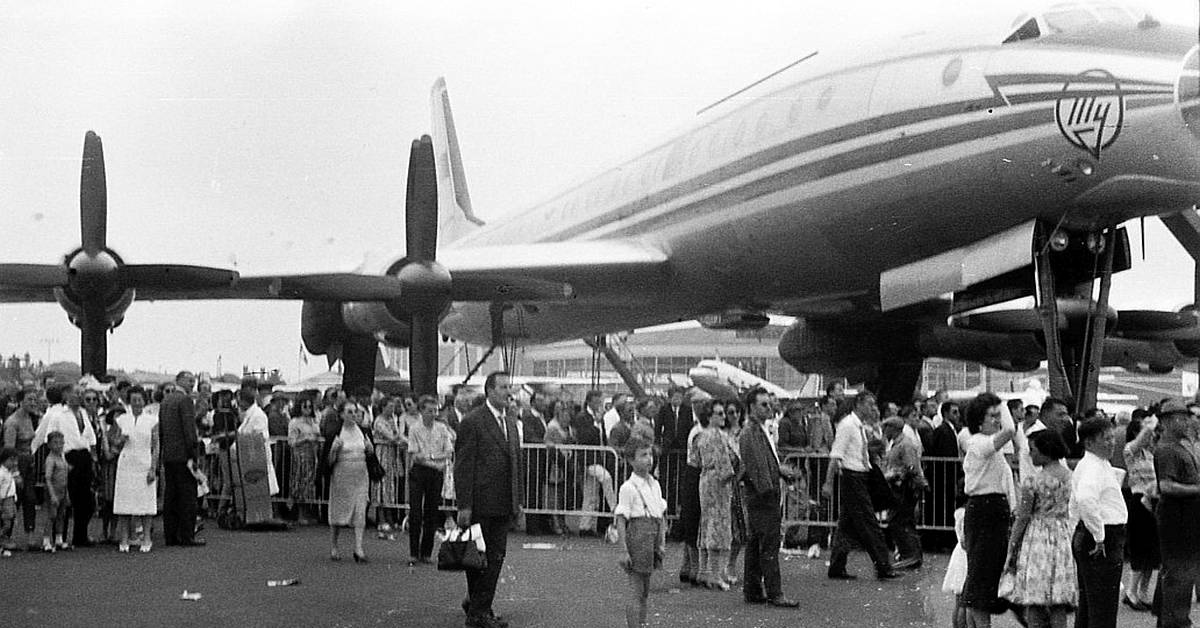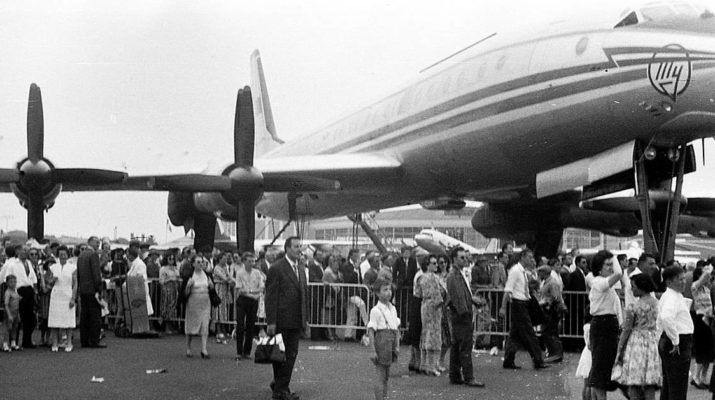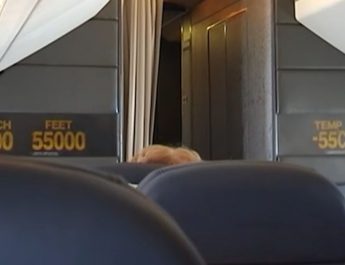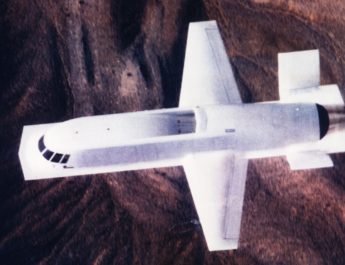Until the mid 1950’s, small short-range airliners like the twin engined IL-14 were really the only type the Soviet Union produced. And that meant flying across the country’s vast territory required multiple stops for refueling.
The exhausting flight could take over 24 hours and required multiple stops for refueling. The need for a new Soviet airliner was clearly pressing, especially since the country’s new leader Nikita Khrushchev had a much more open stance with the West and plans for visits around the world.

In 1955 the Tupolev Design Bureau was given a directive to convert the Tu-95 intercontinental strategic bomber into an airliner. It would be the quickest way to build the Soviet Union a new long-range airliner.
Two parallel projects were launched. The first aimed to minimally modify the Tu-95 and convert it into a VIP transport for Soviet Heads of State (Tu-116). A second, more ambitious project aimed to turn the Tu-95 into a proper airliner (Tu-114 “Rossiya”).
The Tu-114 “Rossiya” was significantly modified, but still retained the Tu-95’s powerful turboprop engines and swept wings, which were mounted lower to accommodate a wider fuselage.
Other design changes include larger flaps, a taller nose gear and new stabilizers.
The Tu-116 airliner is most notable for its incredible maximum speed of 871.38 km/h (541.45 mph), which is comparable to modern-day jet-powered airliners. It has held the official title of fastest propeller-driven aircraft since 24th March 1960.
It also boasted a very impressive (for it’s day) range of 10,900 km (6,800 mi).
Early versions were configured in a three-class layout, which was rather unconventional for a Soviet Airliner. Features included, large tables, private sleeping cabins and a dining lounge served by a full-size kitchen in the lower deck .
Entering service in 1961, only 32 Tu-116 were produced and they served with Aeroflot for 16 years, until they were finally retired from civilian service in 1977.
Records set by Tupolev Tu-114
24 March 1960
Maximum speed on a 1,000-km (621-mile) closed circuit with payloads of 0 to 25,000 kg (0 to 55,116 lb)
Pilot: Ivan Sukhomlin (USSR)
Captain: B. Timochuk + 4 other crew
Speed: 871.38 km/h (541.45 mph)
1 April 1960
Maximum speed on a 2,000-km (1,242-mile) closed circuit with payloads of 0 to 25,000 kg (0 to 55,116 lb)
Pilot: Ivan Sukhomlin (USSR)
2nd pilot: N. Kharitonov + 3 other crew
Aircraft Tu-114 ‘76459’
Speed: 857.277 km/h (532.687 mph)
9 April 1960
Maximum speed on a 5,000-km (3,105-mile) closed circuit with payloads of 0 to 25,000 kg (0 to 55,116 lb)
Pilot: Ivan Sukhomlin (USSR)
2nd pilot: Konstantin Sapelkin (2nd pilot)
Aircrat Tu-114 ‘76459’
Speed: 857.212 km/h (532.647 mph)
12 July 1961
Altitude with payloads of 25,000 to 30,000 kg (55,115 to 66,138 lb)
Pilot: Ivan Sukhomlin (USSR)
2nd pilot: Piotr Soldatov
Altitude: 12,073 m (39,610 ft)
21 April 1962
Maximum speed on a 10,000-km (6,210-mile) closed circuit with payloads of 1,000 to 10,000 kg (2,205 to 22,046 lb)
Pilot: Ivan Sukhomlin (USSR)
2nd pilot: P. Soldatov
Aircraft: Tu-114 ‘76467’
Speed: 737.352 km/h (458.169 mph)
All these records stand, but the category was discontinued when the category was split into takeoff weight sub-groups. Similar records have been set in the new sub-groups by Tu-95 and Tu-142 aircraft at faster speeds.



